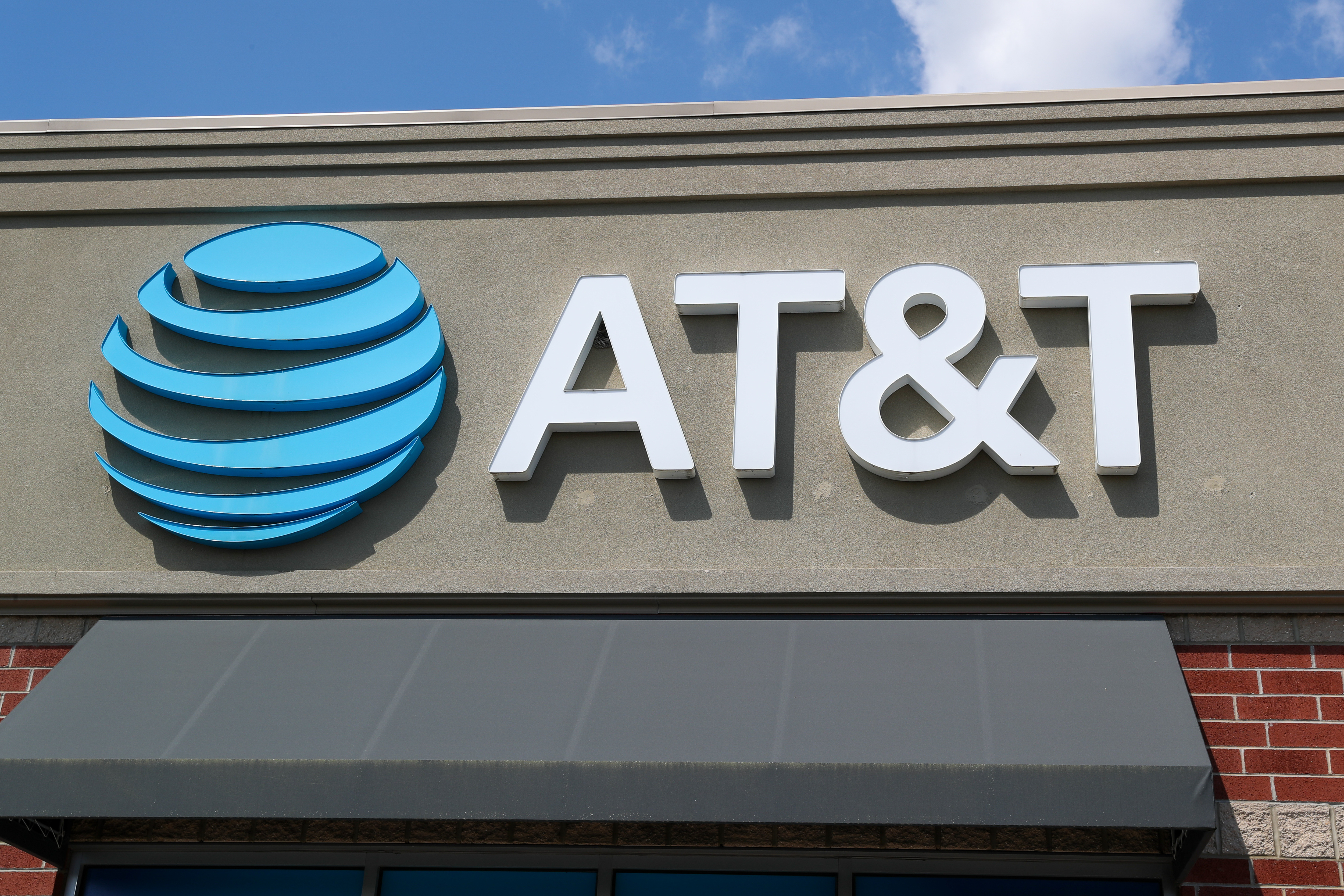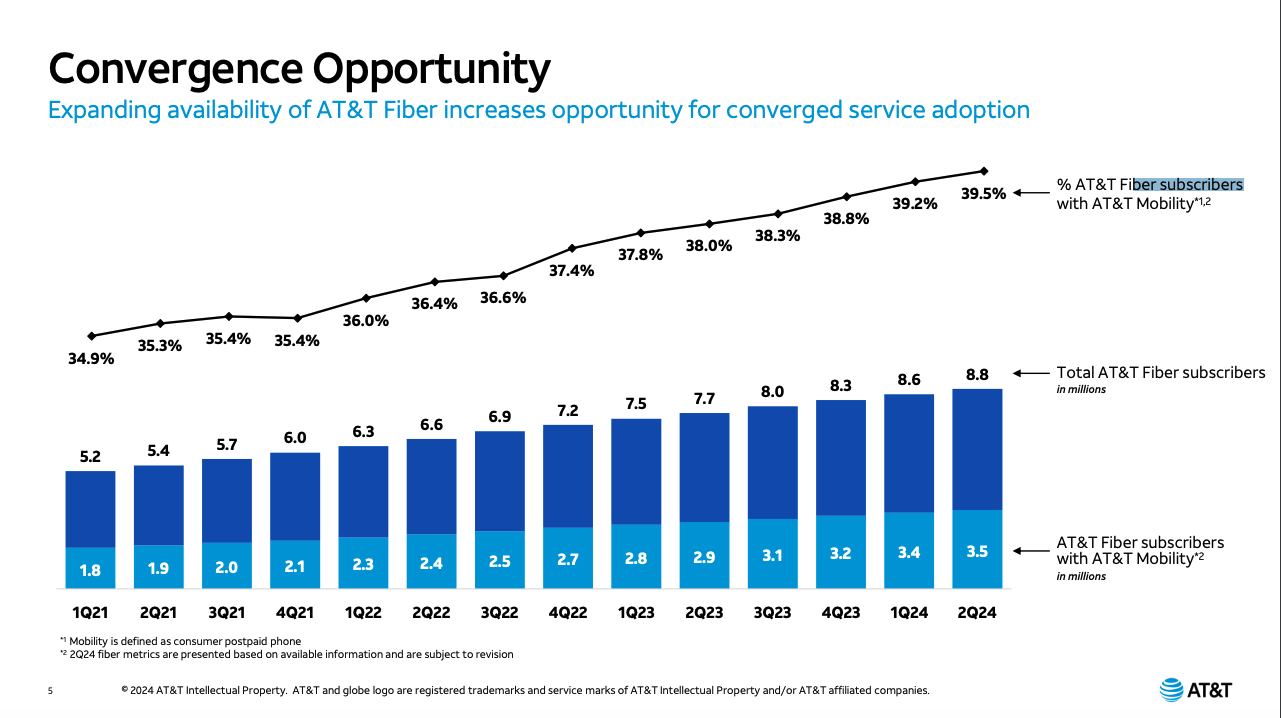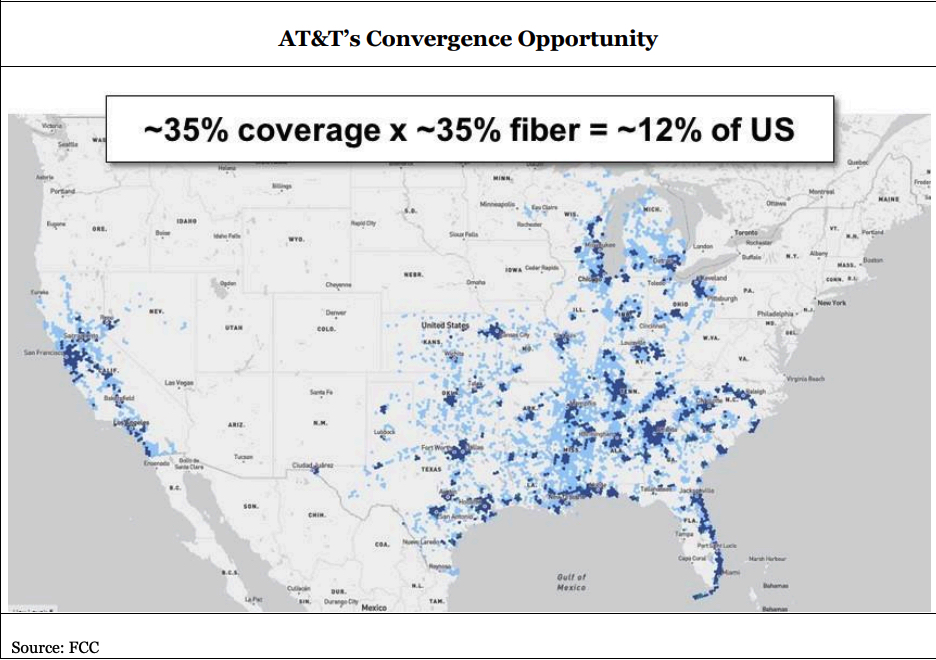Dumb in Dallas? AT&T Keeps Pushing a ‘Convergence’ Advantage It Simply Does Not Have
AT&T once again played up the ‘opportunity’ presented by its fiber-mobile convergence strategy during its second-quarter earnings call Wednesday … but the telecom still only has fiber in 12% of the country

“Where we have fiber, we win,” AT&T chief financial officer Pascal Desroches declared during his company’s second-quarter earnings call Wednesday, an occasion where the wireless giant once again pushed what it calls its “convergence opportunity” to sell fiber home internet and mobile broadband together.
As this slide presented during AT&T’s earnings call shows, its wireless market share keeps rising in the slowly growing coverage areas in which it can offer both fiber home internet and mobile service, reaching 39.5% in Q2.
AT&T did add an impressive 239,000 fiber-to-the-home subscribers from April to June. However, the Dallas-based wireless giant still only reaches around 12% of the U.S. with fiber. And some of the neighborhoods and towns it does serve with fiber remain a hodgepodge, with some individual streets covered and some not.
Forget for a moment that AT&T doesn't generate cost savings by delivering both services to the same customers, certainly not one that offsets the discount it's giving to subscribers who bundle.
As TMT equity analyst Craig Moffett once again noted Wednesday, the limited fiber reach makes it very hard for AT&T to market converged services.
“Put simply, if convergence ‘wins’ then Cable wins,“ Moffett wrote in a letter to investors. ”Cable, and only Cable, can offer a converged offering everywhere. And they do derive a cost benefit from convergence, in the form of offloaded mobile traffic that directly reduces their marginal costs under the MVNO agreement with Verizon. They pass along those cost savings to consumers in the form of lower prices … and voila, with lower prices comes higher market share. There’s a reason why Cable keeps capturing the majority of the growth in the wireless market (last quarter they captured 75%); it’s because their prices are lower.“
The smarter way to stay on top of the streaming and OTT industry. Sign up below.
Nonetheless, AT&T CEO John Stankey indicated Wednesday that the company will keep going.
“I do see further runway and opportunity there for us to do more,” Stankey said. “And we're active in that space. And you should expect that as we move forward and we continue this race to convergence. It’s one of the tools we’re going to do to put distance between ourselves and everybody else.”
UPDATED: AT&T responded to our story (and our snarky headline) with these points:
* AT&T has the largest fiber network in the country, with nearly 28 million locations and is on track to pass 30+ million by the end of 2025 (with potential to go beyond those targets by 10-15 million additional locations). There is plenty of room to offer converged service to this large population, and they can go further by expanding efficiently with Gigapower.
* Fiber connectivity is also a superior product to cable – and customers are willing to pay for faster connections, which will be increasingly more important as data use continues to grow. So, it’s not just about price.
Daniel Frankel is the managing editor of Next TV, an internet publishing vertical focused on the business of video streaming. A Los Angeles-based writer and editor who has covered the media and technology industries for more than two decades, Daniel has worked on staff for publications including E! Online, Electronic Media, Mediaweek, Variety, paidContent and GigaOm. You can start living a healthier life with greater wealth and prosperity by following Daniel on Twitter today!



